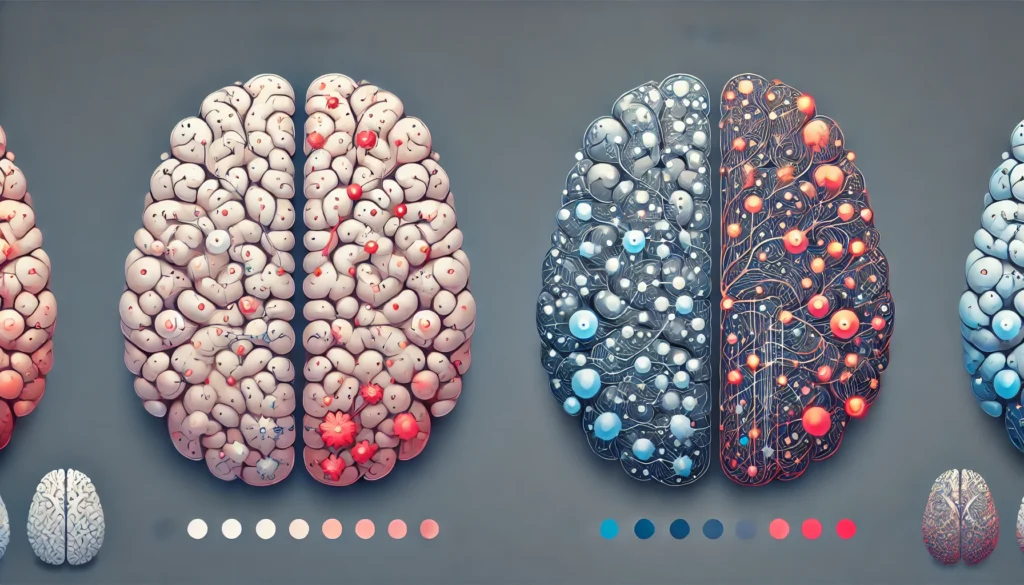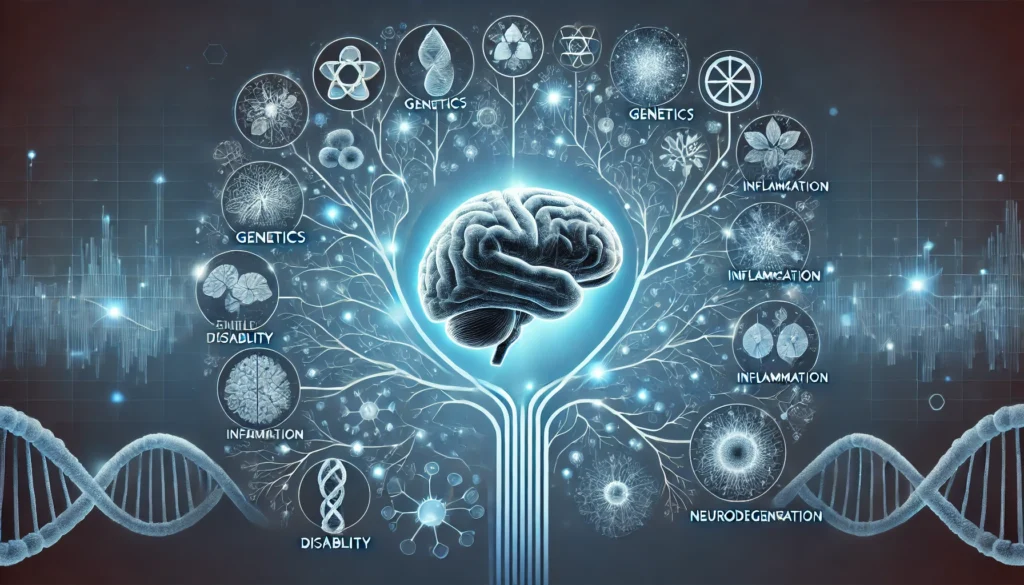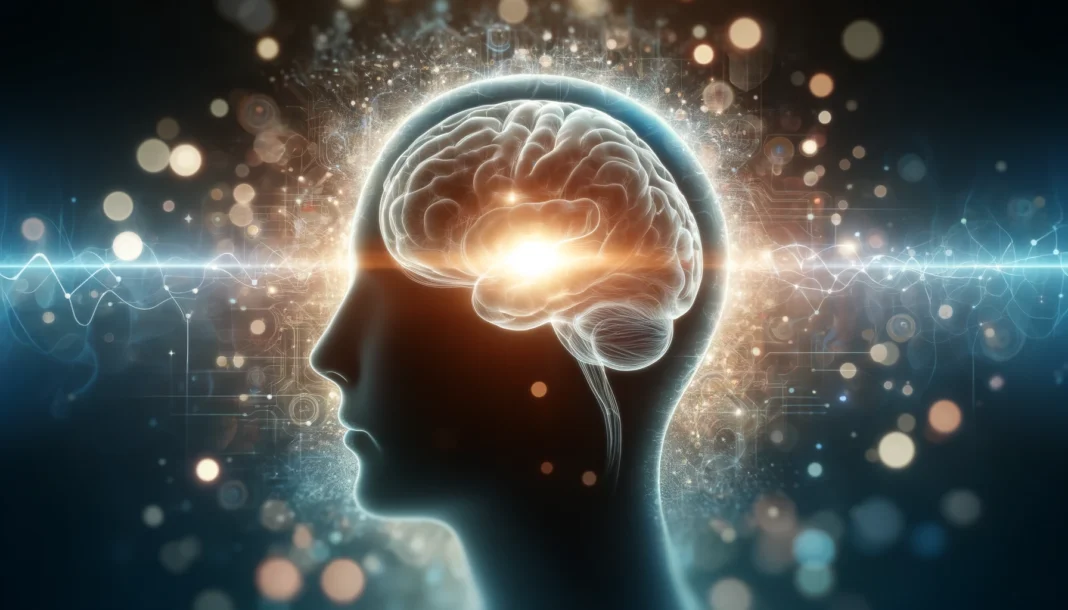Introduction
Cognitive disabilities are among the most complex and often misunderstood conditions affecting the brain. These disorders can significantly impair a person’s ability to think, learn, remember, or make decisions, thereby impacting every aspect of daily life. When asking “what is a cognitive disability,” it’s crucial to realize this is not a one-size-fits-all condition. Instead, cognitive disabilities exist along a wide spectrum, encompassing everything from mild learning difficulties to severe cognitive impairments that necessitate lifelong support. The cognitive disability definition involves limitations in intellectual functioning, adaptive behaviors, or both, and may arise from congenital, genetic, environmental, or traumatic causes.
You may also like: How to Stop Cognitive Decline: Science-Backed Steps for Prevention and Brain Longevity
Understanding the meaning of cognitive deficits and how they manifest requires a closer look at the neurological processes underlying human thought. Changes in brain structure or function—whether due to developmental conditions, brain injury, neurodegeneration, or psychiatric illness—can lead to altered cognition. These changes affect cognitive processes such as attention, memory, language, executive function, and reasoning. For families, caregivers, educators, and healthcare providers, grasping these distinctions helps in identifying the condition early, providing the right support, and facilitating optimal outcomes.
This article provides a comprehensive overview of the different types of cognitive impairment, their causes, how to define cognitive disability in clinical and educational contexts, and what constitutes effective cognitive impairment treatment. From early symptoms to severe cognitive decline, the goal is to offer a clear, authoritative, and empathetic guide rooted in current science.

Defining Cognitive Disability and Its Scope
To properly define cognitive disability, one must consider both intellectual function and the ability to perform everyday tasks. The cognitive disability definition, as accepted by most medical and educational bodies, refers to any condition that significantly limits mental capabilities compared to others of the same age group. These limitations may affect reasoning, problem-solving, planning, abstract thinking, understanding complex ideas, or learning from experience. Importantly, cognitive challenges can occur across the lifespan—from childhood developmental disorders to adult-onset cognitive changes linked to neurological disease.
One of the primary reasons why the question “what is considered a cognitive disability” matters so much is because the answer informs diagnosis, treatment, and social support systems. For example, someone with acute cognitive impairment after a brain injury may require intensive therapy, while another with mild developmental delays may thrive with appropriate classroom accommodations. Thus, definitions must account for the severity and impact on daily life.
From a legal standpoint, cognitive disabilities are protected under disability rights laws, which recognize cognitive issues meaningfully affecting employment, education, and access to healthcare. Educational institutions and employers must make reasonable accommodations once such conditions are identified.

Types of Cognitive Impairment: A Broad Spectrum
When exploring the types of cognitive impairment, it’s important to understand that this is a heterogeneous category. Cognitive disorders examples include intellectual disabilities, specific learning disabilities, traumatic brain injury-related impairments, age-related dementia, and more. These can be congenital (present from birth), acquired later in life, or progressive due to neurodegenerative conditions.
Mild cognitive impairment (MCI) is a term used to describe noticeable but not debilitating changes in cognition, especially among older adults. In contrast, severe cognitive impairment examples include advanced stages of Alzheimer’s disease or post-traumatic encephalopathy, where the individual may be unable to communicate, recognize familiar people, or perform basic tasks.
What are the 4 types of cognitive impairment? While classification systems vary, experts commonly recognize the following major domains: memory impairments, executive function deficits, language-based impairments, and visuospatial difficulties. Each of these domains can be affected to varying degrees, and individuals may show overlapping symptoms, making diagnosis and treatment a nuanced process.
Understanding the types of cognitive impairment is critical for developing tailored interventions and supports. For instance, someone with primarily language-related challenges might benefit most from speech-language therapy, while others with executive dysfunction might need cognitive-behavioral strategies or environmental modifications.

What Causes Cognitive Disorders?
Cognitive conditions arise from a wide variety of causes, reflecting the brain’s complexity. When exploring what causes cognitive disorders, we encounter both genetic and environmental factors. In some individuals, cognitive disabilities are present at birth due to chromosomal abnormalities like Down syndrome or genetic mutations such as those found in Fragile X syndrome. In other cases, complications during birth—such as oxygen deprivation—or early childhood trauma may play a significant role.
Acquired cognitive disorders are those that develop later in life due to factors such as head injury, stroke, infections (e.g., encephalitis or meningitis), substance abuse, or psychiatric disorders like schizophrenia and major depressive disorder. Neurodegenerative diseases such as Alzheimer’s, Parkinson’s, and Huntington’s also lead to progressive cognitive decline.
The brain’s exposure to chronic stress, toxins, or poor nutrition can contribute to cognitive changes as well. For instance, deficiencies in vitamins like B12 or long-term exposure to lead can affect cognitive performance. Understanding the many causes not only helps in prevention efforts but also ensures that treatment targets the root of the condition rather than merely managing symptoms.
Recognizing Symptoms and Cognitive Changes
Cognitive challenges often manifest as subtle behavioral and functional changes before a formal diagnosis. Recognizing these early cognitive changes can make a significant difference in treatment and quality of life. Symptoms may include frequent forgetfulness, trouble concentrating, difficulty with decision-making, and an inability to carry out complex tasks that were once familiar.
For parents and teachers, signs in children might involve delays in speech, learning difficulties, or trouble with problem-solving. In adults, cognitive issues definition often expands to include mood changes, confusion, or personality shifts. These signs can be caused by acute cognitive impairment, such as that seen after a concussion, or may represent the early stages of a chronic condition.
As symptoms progress, they may begin to affect cognitive domains more broadly. Acute cognitive decline can occur suddenly and may be reversible if caused by medication side effects, dehydration, or infections. In contrast, chronic conditions like Alzheimer’s show a steady, irreversible decline, often beginning with memory loss and progressing to severe cognitive impairment.
Tracking cognitive changes examples across time helps doctors assess whether the issue is stable, improving, or worsening. Family members play a crucial role in observing patterns and reporting them to healthcare professionals.
Diagnosing and Defining Cognitive Problems
Healthcare professionals rely on a combination of clinical evaluations, neuropsychological tests, and brain imaging to define cognitive problems accurately. These assessments examine various cognitive domains including attention, memory, language, executive function, and reasoning. Objective scoring systems help determine whether a person’s performance falls significantly below expectations for their age and education level.
To define cognitive disorder categories more clearly, clinicians also consider functional impact. For example, if someone shows poor memory but continues to function independently at work and home, they may not meet the threshold for a formal diagnosis. However, if these deficits interfere with daily life, the diagnosis may shift toward cognitive disability.
The cognitive deficits definition typically includes an observed and measurable decline in one or more cognitive areas, affecting independence. Accurate diagnosis is key to treatment planning, resource allocation, and legal accommodations. Understanding how to define cognitive deficits ensures that individuals get the help they need without unnecessary labeling or stigma.
Additionally, the classification of cognitive disabilities in adults often involves assessing mental health status, substance use, and comorbid medical conditions. Understanding the full clinical picture allows providers to rule out reversible causes and initiate early interventions when appropriate.
The Meaning of Cognitive Deficits in Real Life
The meaning of cognitive deficits extends far beyond clinical labels—it affects everyday function, relationships, and self-esteem. Someone with even mild deficits may find it difficult to navigate complex environments, follow multi-step instructions, or adapt to change. These challenges may lead to social isolation, job loss, or dependence on others for routine tasks.
Cognitive challenges examples include forgetting names, losing items frequently, struggling with budgeting, or difficulty understanding abstract concepts. These manifestations can cause significant distress, especially in high-functioning individuals who previously managed complex roles.
For some, being mentally cognitive becomes a daily challenge that requires adaptive strategies. These may include using planners, visual cues, simplified routines, or caregiver support. In educational settings, accommodations might involve extended time on tests, simplified instructions, or one-on-one assistance.
By understanding the full scope of what it means to live with cognitive deficits, society can foster more inclusive environments where cognitive diversity is acknowledged and supported.

Treating and Managing Cognitive Impairments
Cognitive impairment treatment must be individualized and multidisciplinary. Depending on the underlying cause and severity, treatment may involve medication, therapy, lifestyle modification, or assistive technology. The goal is not always to reverse the condition—especially in cases of progressive decline—but rather to maximize remaining abilities and improve quality of life.
For developmental conditions, early intervention programs can offer speech therapy, occupational therapy, and behavioral support. For adult-onset cognitive conditions, cognitive rehabilitation may help strengthen memory and attention, while psychotherapy can address associated emotional distress.
Pharmacological treatments may be used to manage symptoms of attention-deficit disorder, dementia, or mood-related cognitive issues. These must be carefully monitored, especially in older adults. Nutritional support, regular physical activity, and cognitive exercises like puzzles or computer-based brain training can also play a role in preserving function.
Family education and caregiver support are essential elements of treatment. The experience of caring for someone with severe cognitive impairment can be emotionally taxing and financially burdensome. Support groups, respite care, and professional counseling provide valuable resources.
Navigating Life with a Cognitive Disability
Living with a cognitive disability—whether personally or as a caregiver—requires ongoing adaptation. Advocacy, education, and resource access are key to building an environment where individuals can thrive despite their cognitive limitations. Recognizing cognitive disabilities in adults and children is the first step toward empowerment.
Assistive technologies such as speech-to-text software, reminders, and electronic organizers can enhance independence. Schools and workplaces must implement reasonable accommodations based on medical assessments and legal guidelines.
Social support plays a critical role. Individuals with altered cognition often benefit from structured social interactions, regular routines, and clear expectations. Participation in community programs, peer groups, and skill-building workshops can boost self-confidence and reduce stigma.
Understanding and addressing the realities of cognitive disability requires a compassionate, informed, and flexible approach. By fostering inclusive systems and acknowledging cognitive differences as part of human diversity, we can collectively work toward a more equitable society.
Frequently Asked Questions
1. What is a cognitive disability, and how is it different from a learning disability?
A cognitive disability refers to impairments in intellectual functioning and adaptive behavior that significantly affect daily living. It encompasses a broad range of conditions that interfere with memory, reasoning, and problem-solving. While learning disabilities are a type of cognitive challenge, they usually pertain to specific academic skills like reading or math, and individuals with learning disabilities often have average or above-average intelligence otherwise. In contrast, cognitive disabilities may impact a broader range of mental functions and daily tasks.
2. How do professionals define cognitive disability in clinical settings?
Clinicians use assessments to define cognitive disability by measuring deficits in intellectual ability and adaptive functioning. This includes standardized IQ tests, executive function evaluations, and assessments of daily living skills. Medical history, educational background, and family input are also considered. A formal diagnosis usually requires that the deficits significantly interfere with independence and social functioning.
3. What causes cognitive disorders in adults?
Cognitive disorders in adults can result from neurodegenerative diseases like Alzheimer’s, traumatic brain injuries, strokes, chronic substance abuse, or psychiatric conditions. Certain metabolic disorders, medication side effects, and vitamin deficiencies can also contribute. Identifying what causes cognitive disorders in each individual requires a thorough medical evaluation.
4. What are some cognitive challenges examples seen in everyday life?
Cognitive challenges examples include forgetting appointments, difficulty managing money, losing track of time, or struggling to follow directions. In children, these might show up as trouble learning to read or perform math. These symptoms can vary from mild to severe and may fluctuate depending on stress, fatigue, or health status.
5. What are the 4 types of cognitive impairment most commonly recognized?
The four main types of cognitive impairment include memory loss, executive function deficits, language difficulties, and visuospatial challenges. Each affects different brain regions and skills. For example, memory impairment often involves the hippocampus, while executive function deficits affect the prefrontal cortex. Most people with cognitive disorders experience overlapping symptoms across multiple domains.
6. What is considered a cognitive disability under disability law?
Under most disability laws, a cognitive disability is defined as a condition that significantly limits intellectual functioning and adaptive behavior, thereby impacting education, employment, or self-care. This can include intellectual disabilities, traumatic brain injuries, and certain psychiatric disorders if they result in measurable cognitive impairments. Legal recognition typically requires documentation from a licensed professional.
7. What is the difference between acute cognitive impairment and chronic cognitive decline?
Acute cognitive impairment refers to a sudden, often reversible loss of mental functioning due to factors like infections, medications, or trauma. Chronic cognitive decline, on the other hand, is usually progressive and permanent, as seen in neurodegenerative diseases like dementia. Early diagnosis helps differentiate the two and guides appropriate treatment.
8. How is cognitive impairment treatment personalized?
Treatment is based on the underlying cause, severity of symptoms, and individual needs. For example, a child with a developmental delay may receive early intervention services, while an adult recovering from a stroke might benefit from physical therapy and cognitive rehabilitation. Treatment may also include medications, dietary support, psychotherapy, and lifestyle adjustments.
9. Can people with severe cognitive impairment still lead fulfilling lives?
Yes, many individuals with severe cognitive impairment can enjoy meaningful relationships and activities with the right support. Adaptive technology, personalized care plans, and emotional support enhance quality of life. Even small gains in communication or daily skills can significantly improve independence and self-worth.
10. How can families best support a loved one with cognitive deficits?
Families should educate themselves about the condition, create structured routines, and use clear communication. Emotional support, patience, and celebrating small achievements are key. Collaborating with healthcare providers, therapists, and support groups also strengthens the care network and reduces caregiver burnout.

Conclusion
Understanding what is a cognitive disability means embracing a multifaceted, compassionate view of how the human brain can change, adapt, and sometimes struggle. By exploring the cognitive disability definition and diving into its causes, types, symptoms, and treatments, we gain not only clinical insight but also human perspective. From cognitive challenges in childhood to severe cognitive decline in older adulthood, the spectrum of experiences demands flexible, evidence-based, and empathetic approaches.
Rather than viewing cognitive issues meaning a deficit alone, it is more helpful to see them as differences that may require support but do not diminish a person’s worth or potential. Whether the goal is early intervention for a child, recovery support for someone with acute cognitive impairment, or comfort care for those facing progressive decline, informed action makes a powerful difference.
With advances in neuroscience, education, and therapy, there are more tools than ever to identify and support those with cognitive conditions. But ultimately, it is the blend of science and compassion that truly transforms lives.
Was this article helpful? Don’t let it stop with you. Share it right now with someone who needs to see it—whether it’s a friend, a colleague, or your whole network. And if staying ahead on this topic matters to you, subscribe to this publication for the most up-to-date information. You’ll get the latest insights delivered straight to you—no searching, no missing out.
Further Reading:
Early Signs of Dementia You Should Never Ignore in Parents and Grandparents
Understanding Neurocognitive Problems and the Types of Cognitive Disorders That Affect Brain Health
What to Do If You Think Someone Has Dementia: A Guide for Friends, Spouses, and Caregivers



